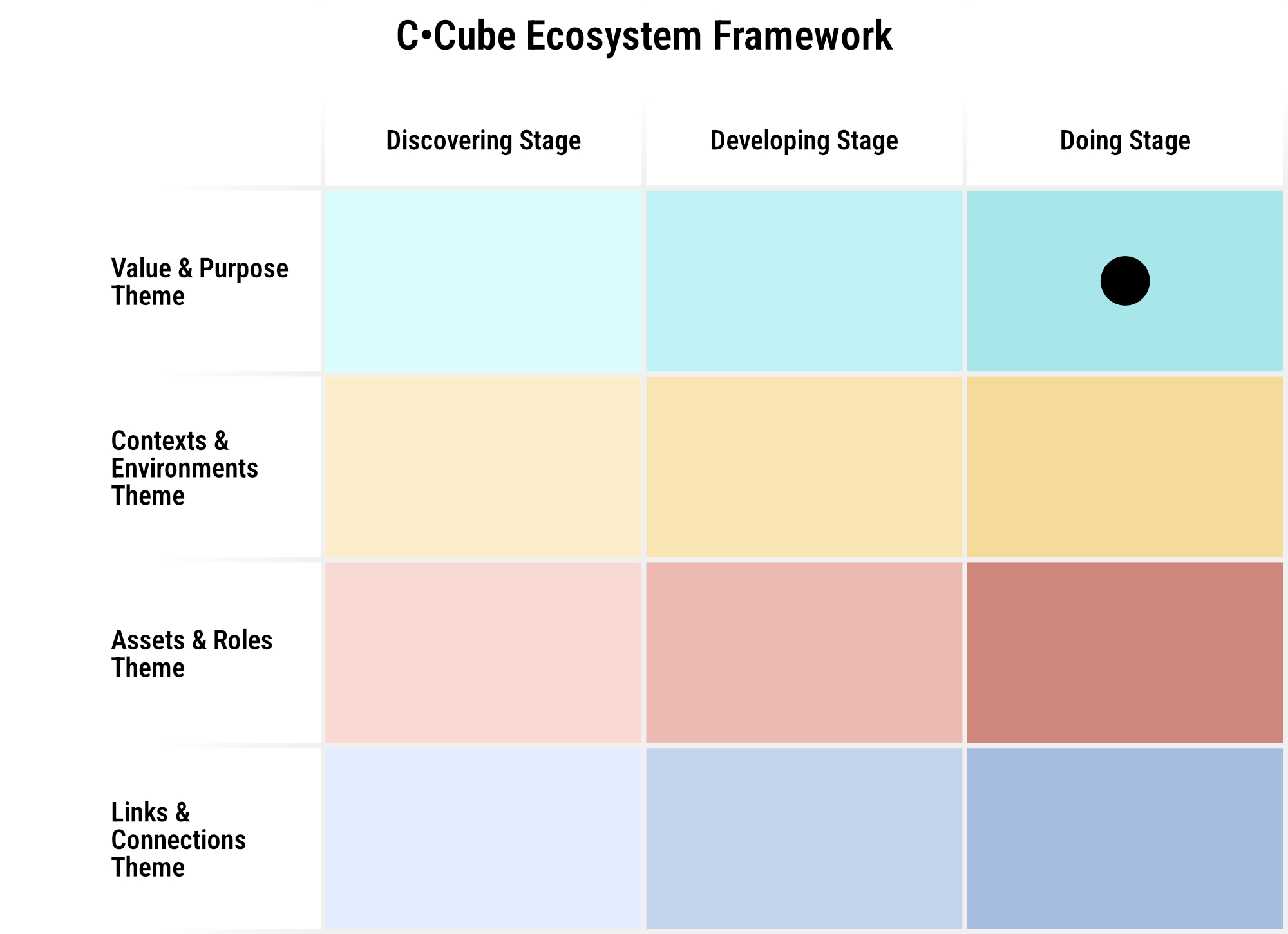Implement Value-Creating Activities
Turning Vision into Impact
Value & Purpose theme and the Doing stage
Situated at the intersection of the Value & Purpose theme and the Doing stage, “Implement Value-Creating Activities” represents the execution phase of entrepreneurial ecosystem development. This is where strategies are put into action, initiatives are launched, and real value is delivered to stakeholders. It’s the critical bridge between ideation and impact.
When ecosystem stakeholders and partners, including colleges and universities, work together to implement value-creating activities, they create momentum for their ecosystem:
- Tangible Impact: The execution of value-creating activities is where the rubber meets the road. It’s where the ecosystem’s intended impact is translated into tangible results that benefit stakeholders, from job creation to economic growth.
- Validation of Ideas: Implementation provides real-world validation for the ideas generated during ideation. It allows ecosystem builders to test assumptions, gather feedback, and refine their strategies based on practical experience.
- Momentum and Growth: Successful implementation creates “small wins,” builds momentum, and attracts more stakeholders, including investors, entrepreneurs, and partners. It propels the ecosystem forward on its path to sustainability and expansion.


Considerations
As ecosystem-building partners work on implementing value-creating activities, consider the following:
- Project Management: Effective project management is crucial during implementation. Establish clear timelines, milestones, and accountability mechanisms to ensure that activities stay on track.
- Resource Allocation: Allocate resources wisely, considering financial, human, and physical assets. Ensure that the necessary resources are available to support the successful execution of activities.
- Stakeholder Engagement: Engage stakeholders—especially entrepreneurs—throughout the implementation process. Keep them informed, involved, and invested in the activities to maintain their support and commitment.
- Collaborative Partnerships: Partner with other ecosystem players, including businesses, educational institutions, and government agencies, to share resources and expertise. Collaboration can amplify the impact of value-creating activities.
- Monitoring and Evaluation: Establish robust monitoring and evaluation mechanisms to track progress and measure the outcomes of implemented activities. Use data and feedback to make informed adjustments and improvements.
- Resource Mobilization: Seek funding and investment opportunities to support the execution of activities. This may involve attracting venture capital, securing grants, or leveraging public-private partnerships.
- Capacity Building: Invest in the capacity-building of ecosystem participants to ensure they have the skills and knowledge necessary to contribute effectively to value-creating activities.
Conversation Guides
Use these conversation guides to begin implementing value-creating activities in your ecosystem building work:

